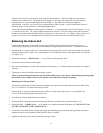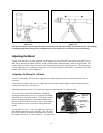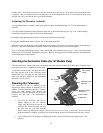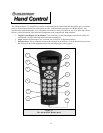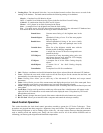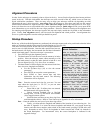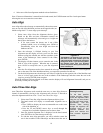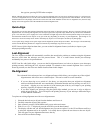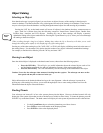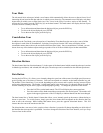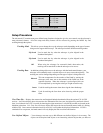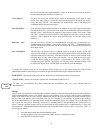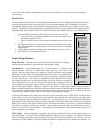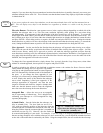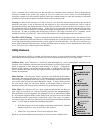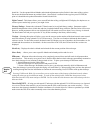
20
O
O
b
b
j
j
e
e
c
c
t
t
C
C
a
a
t
t
a
a
l
l
o
o
g
g
Selecting an Object
Now that the telescope is properly aligned, you can choose an object from any of the catalogs in the telescope's
extensive database. The hand control has a key (4) designated for each of the catalogs in its database. There are two
ways to select objects from the database: scrolling through the named object lists and entering object numbers.
Pressing the LIST key on the hand control will access all objects in the database that have common names or
types. Each list is broken down into the following categories: Named Stars, Named Object, Double Stars,
Variable Stars, Asterisms and CCD Objects. Selecting any one of these catalogs will display a numeric-
alphabetical listing of the objects under that list. Pressing the Up and Down keys (10) allows you to scroll through
the catalog to the desired object.
When scrolling through a long list of objects, holding down either the Up or Down key will allow you to scroll
through the catalog more rapidly by only displaying every fifth catalog object.
Pressing any of the other catalog keys (M, CALD, NGC, or STAR) will display a blinking cursor below the name of
the catalog chosen. Use the numeric key pad to enter the number of any object within these standardized catalogs.
For example, to find the Orion Nebula, press the "M" key and enter "042".
Slewing to an Object
Once the desired object is displayed on the hand control screen, choose from the following options:
• Press the INFO Key. This will give you useful information about the selected object such as R.A.
and declination, magnitude size and text information for many of the most popular objects.
• Press the ENTER Key. This will automatically slew the telescope to the coordinates of the object.
Caution: Never slew the telescope when someone is looking into the eyepiece. The telescope can move at fast
slew speeds and may hit an observer in the eye.
Object information can be obtained without having to do a star alignment. After the telescope is powered on,
pressing any of the catalog keys allows you to scroll through object lists or enter catalog numbers and view the
information about the object as described above.
Finding Planets
Your telescope can locate all 8 of our solar systems planets plus the Moon. However, the hand control will only
display the solar system objects that are above the horizon (or within its filter limits). To locate the planets, press the
PLANET key on the hand control. The hand control will display all solar system objects that are above the horizon:
• Use the Up and Down keys to select the planet that you wish to observe.
• Press INFO to access information on the displayed planet.
• Press ENTER to slew to the displayed planet.
Hel
p
ful
Hint



